And more about Ada’s life.

Now I found that Ada’s mother had her own interesting story. Sally Worsick was born in 1829 at Holderness in Cragg Vale a building hugging the lower end of what is billed as the longest continuous gradient in England 968 feet over 5.5 miles.
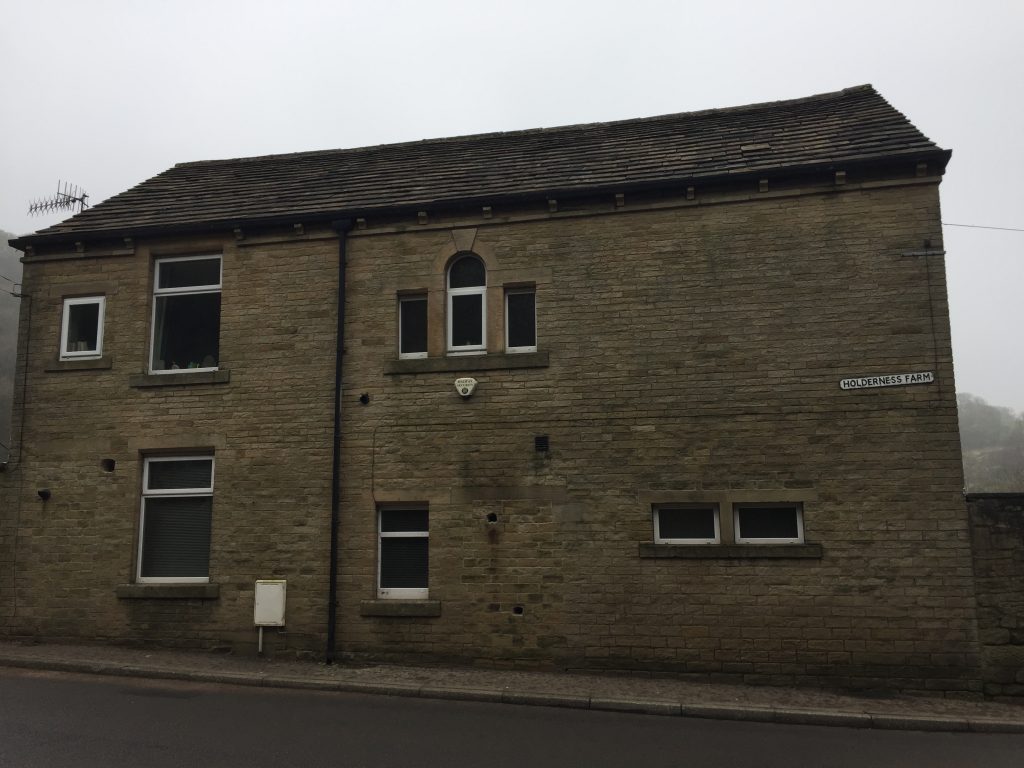

Holderness from the bridge over Cragg Brook 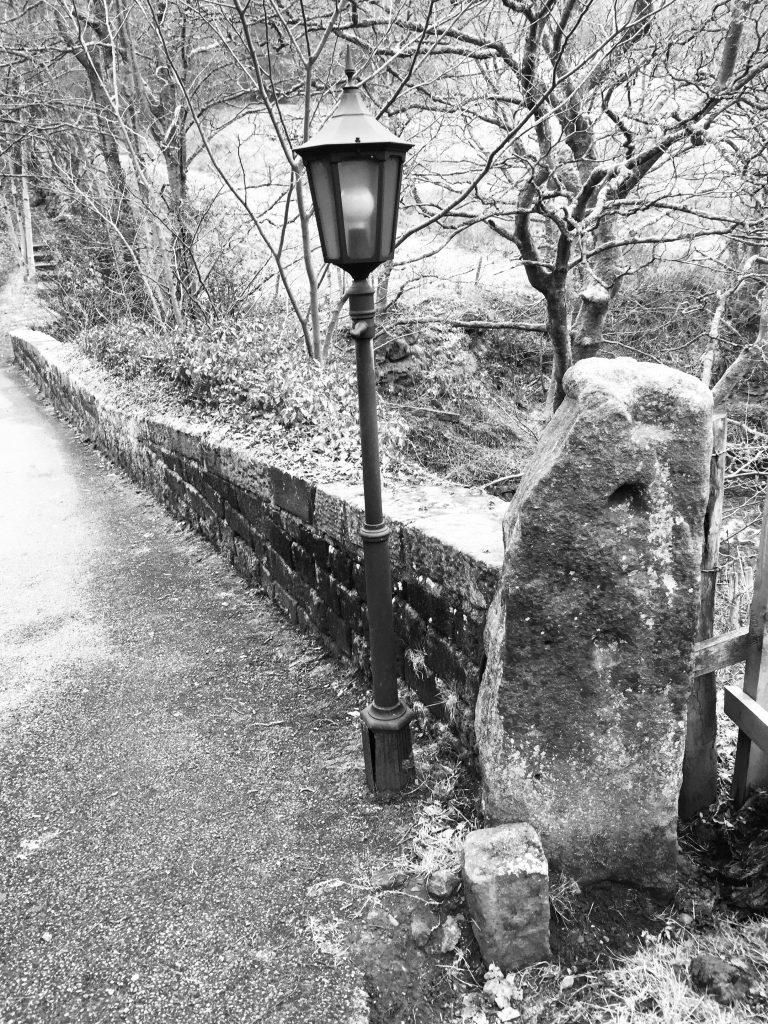
Spa Bridge over Cragg Brook. I’d followed the lane down behind Holderness to get a better view and I felt that I’d stepped back in time. I found a plaque explaining the name Spa Bridge written by John Billingsley who has aided me in my research from time to time. Cragg Vale is the site of a Spa thought to be at least 300 years old! During the long dark winters causing hardship and ill health for the local population everyone looked forward to spring time and it was the custom for people to gather at the spa to drink the water in the belief that it would cleanse them of their winter ailments.
It wasn’t until lockdown that I’d begun to explore this steep valley whose river, the Cragg Brook, once powered several mills and where the employment of children caused the vicar of Cragg Vale to comment “If there is one place in England that needed legislative interference it is this place; for they work 15 and 16 hours a day frequently, and sometimes all night. Oh! it is a murderous system and the mill owners are the pest and disgrace of society…!” (These are the reported words of ‘Revd Devine’, actually Revd Thomas Crowther, vicar of Cragg Vale from 1821 to 1859 in George Crabtree’s ‘A Brief Description of a Tour Through Calder Dale printed at Huddersfield in 1833.’ )

The church of St John in the Wilderness lies at river level way below the main road. It’s a quiet place, now of course closed, but I’d have liked to see inside. The population of Cragg Vale today is around 600 but the church speaks of more populous times when the surrounding mills were working flat out. Thomas Crowther was its first vicar in 1821 and he campaigned tirelessly until his death in 1859 to reduce the long and guelling hours worked in the mills by the children for which he was harrassed repeatedly by the mill owners. In more recent times the church was the scene of much notoriety when its honorary church warden who raised thousands of pounds for the church was none other than Jimmy Saville – who frequently parked his caravan at the Hinchcliffe Arms, the picturesque pub in the village named after the mill owner whose home Cragg Hall used to lie just above the river. Built between 1904 and 1906 it burned down in 1921 and remained a burned out shell until the 1950s when it was rebuilt using some of the original stonework.
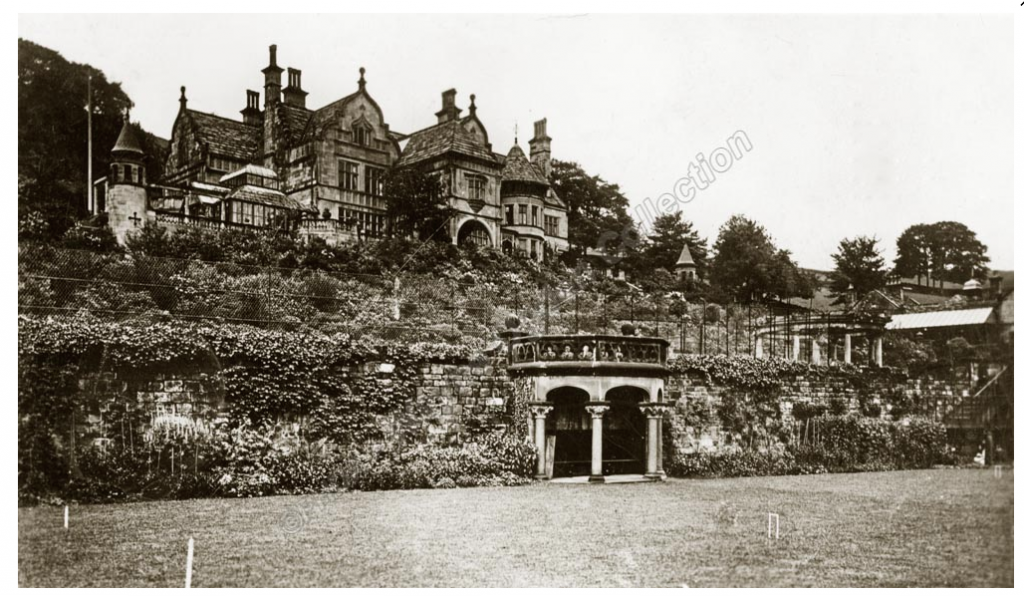


After Savile’s death it came to light that the one time DJ and major fundraiser for various charities, including several thousands of pounds for Cragg Vale church, where he was a Churchwarden and would sometimes preach sermons from the pulpit, had been a prolific sex offender.

Sally Worsick’s birthplace, Holderness, is today an immaculate 5 bedroomed home with expansive views across wooded Cragg Vale, now bereft of its mills. What were once subsistence level hillside farms during the nineteenth century have been converted into expansive residences. As I viewed the map I saw that from Holderness it might be possible to see Bell House, home of the coiners. In fact the welcoming sign on the main road into this small town is ‘Mytholmroyd, Coiners Country.’
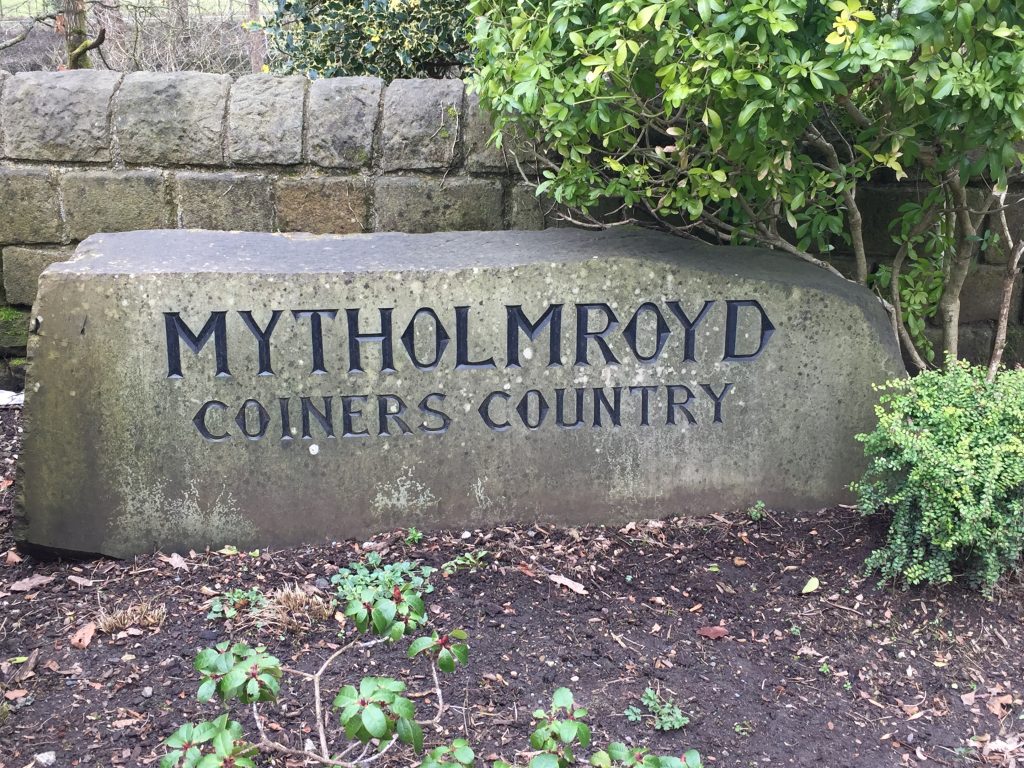
The Cragg Vale Coiners were a band of counterfeiters who produced fake gold coins in the late 18th century to supplement the small incomes from hand loom weaving. The leader of the gang was David Hartley who lived at Bell House. Back in March I’d walked almost to Bell House through Clough Nature Reserve after reading ‘The Gallows Pole’, Ben Myers’s story of the desperate rise and ultimate fall of the coiners gang and the gruesome murders that were perpetrated by them in this rural landscape that he knows and describes so well.
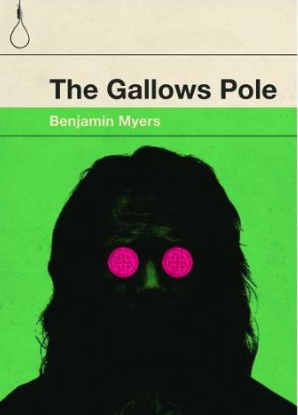
The closest building to Bell House is Frost Hole, a mere three fields away. Overlooking the little valley of Frost Hole Clough the farm was built in the early 1600s and around 1840 it became Sally’s home. Her father Henry Worsick was a farmer and the family shared the home with the Sutcliffes, a family of hand loom weavers. It’s highly likely that Henry’s wife Ann Sutcliffe is part of this Sutcliffe family.

In the 1851 census 19 out of the 20 persons listed on page 24 are Worsicks. The Worsicks appear to have been firmly rooted in this locality but not only that, they were prolific. Sally’s grandfather Richard Worsick and his wife Mary (nee Spencer) and their ten children lived at . . . oh my . . . Bell House, former home of ‘King’ David Hartley, the mastermind behind the coiners who was eventually hanged at Tynburn near York in 1770. So Ada’s grandfather, Henry, born at Burnt Acres in 1797had been brought up at Bell House. As I’d turned my attention to Ada’s parents this morning I’d never thought I’d ended up in Coiners Territory!
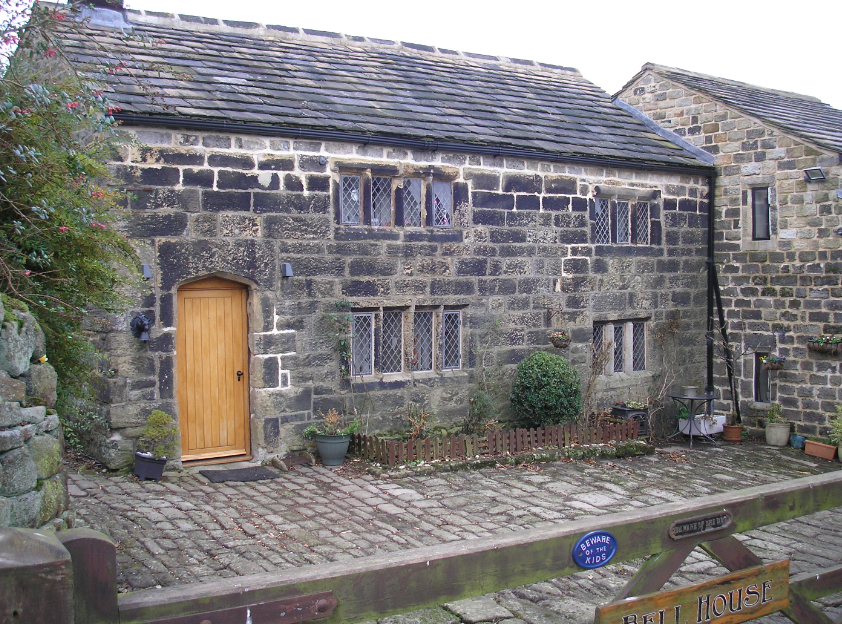
In 1854 Sally married George Townsend, a dyer and son of a woodturner who specialised in making wooden shuttles for weaving. It’s interesting that Ada’s future husband was a shuttle tip maker and lost his life through an accident in that industry. They had four daughters in their first five years of married life, Ada being the third child, born in 1859. By 1861 the family have moved down into the Calder Valley, just as most of the people were moving from the isolated upland farms as industry was developing the valleys using water to power machinery. The family were now living right on the banks of the River Calder at Heppens End, where George is now a cotton stiffener and finisher.

Hard Hippens cottage. Not the greenhouse on top of the garage 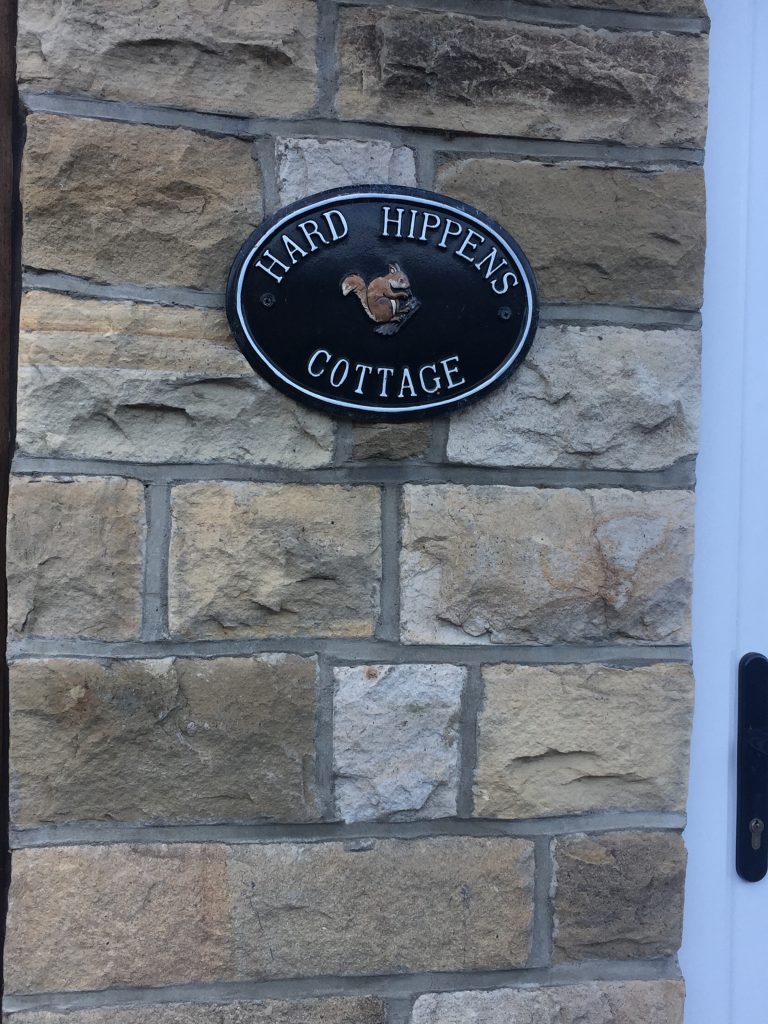
Sally and George were living here in 1861 with one year old Ada
Heppens End is a terrace of four cottages close to the river in Hawksclough between Hebden Bridge and Mytholmroyd. Today the cottages are the only buildings that remain in what is now a large industrial estate, just across the River Calder from the now levelled Walkley Clog Factory which burned down in August 2019.
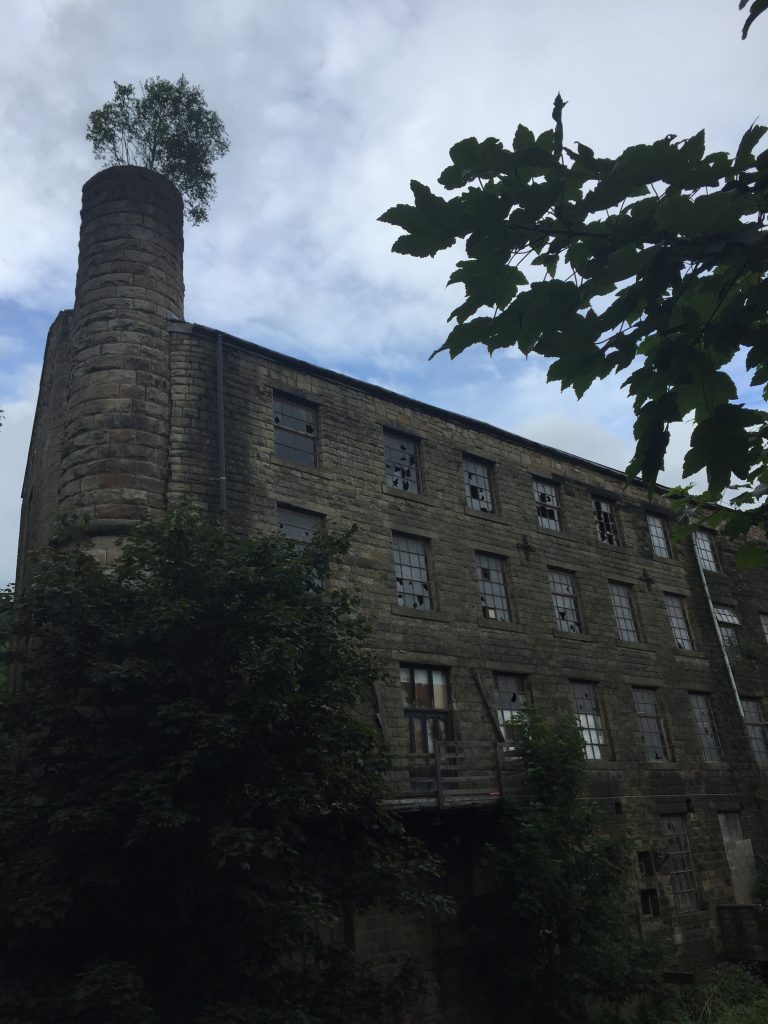
Walker Clog Factory before the fire 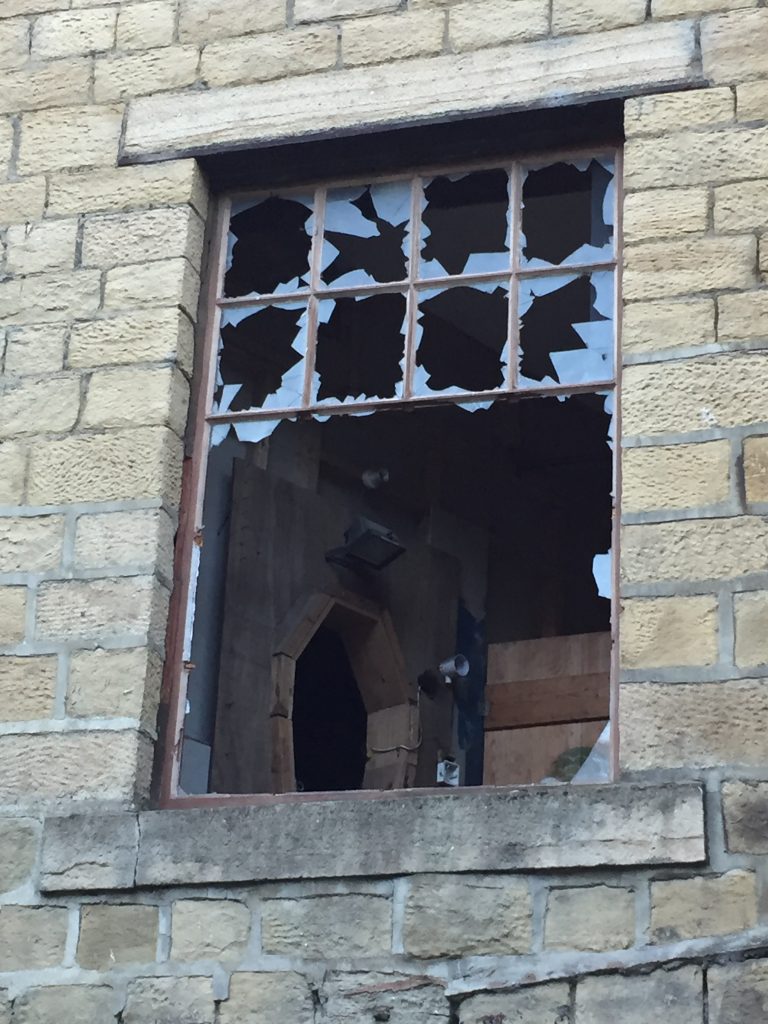
Is that a coffin? 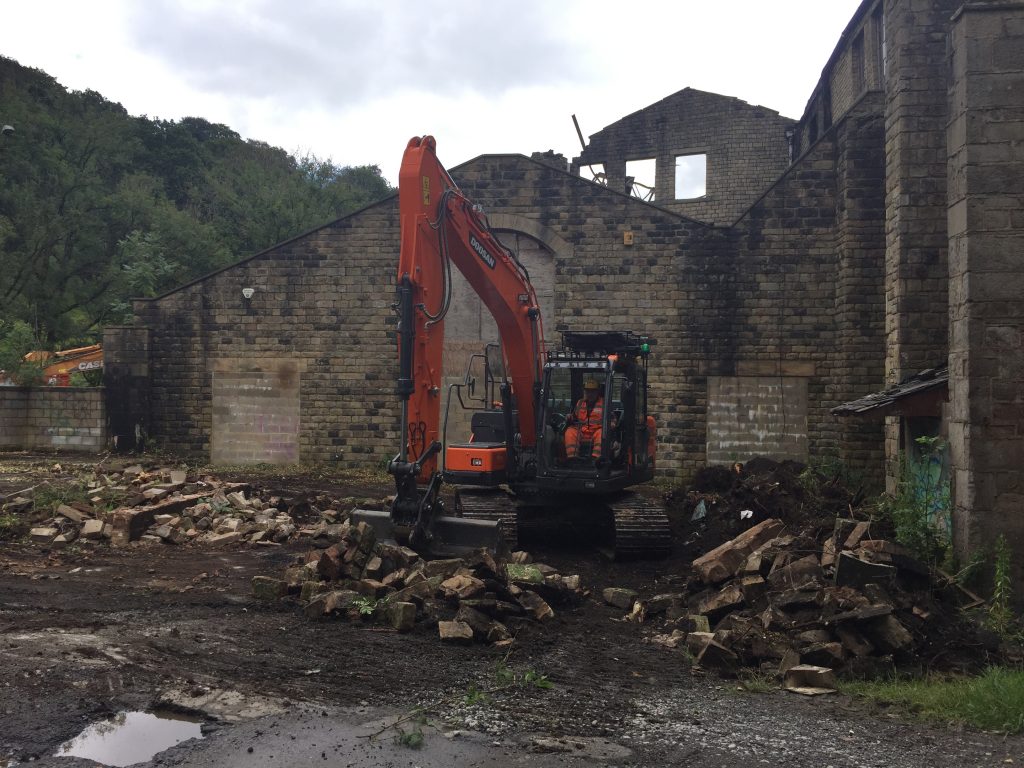
Clearing the site after the fire 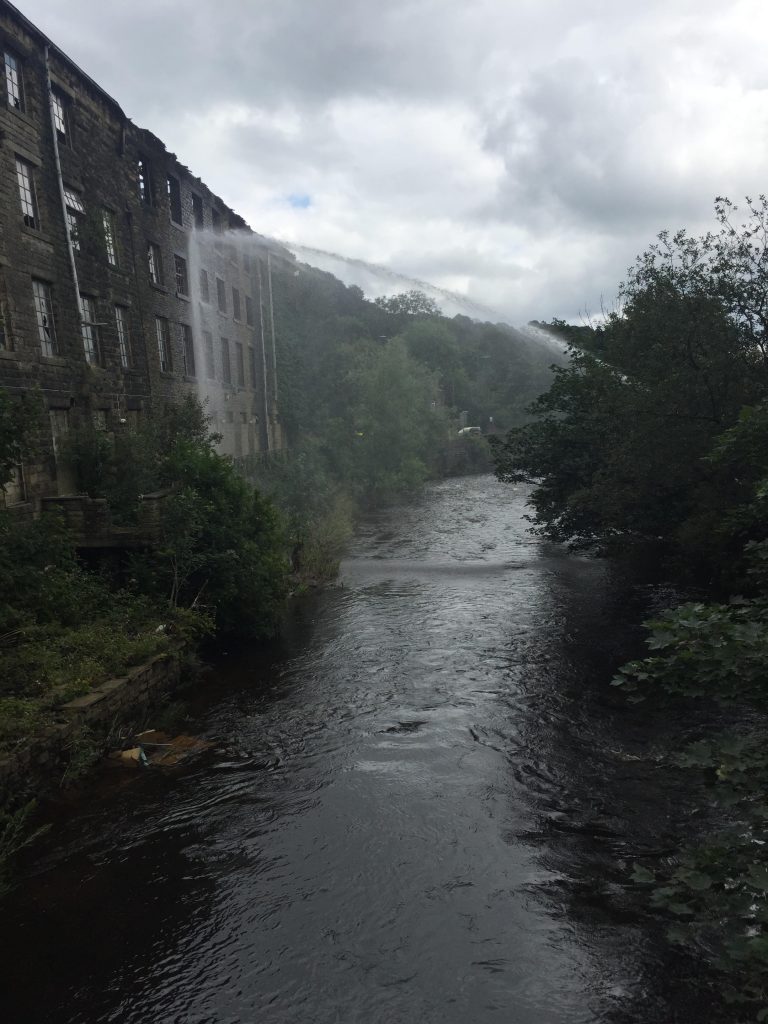
The day after the fire the building is still being sprayed with water to stop it further igniting
I pass the cottages at least once a week on my walks along the valley and I’d taken a photo of the greenhouse planted neatly on top of the garage. By the time Ada was 12 in 1871 the family had moved into the centre of Hebden Bridge to Carlton Street, next street to Crown Street where I live and her father George is a furniture broker and fustian finisher. That’s an interesting combination. Ada’s two older sisters are tailoresses. By the age of 22 Ada is now a ‘shopwoman’ and living with the family is a draper and milliner from Leeds by the name of Edith Miles, nine years older than Ada. The next time I find Ada she’s still living with her parents and Edith but they have moved to Market Street where they occupy two houses, presumably one being a drapers/milliners/tailoresses shop. Perhaps next door is Ada’s dad’s furniture brokerage. Ada was 36 when she married Edgar Harwood, just a year older than her and it must have been presumed by friends and family that she was a confirmed spinster by that time. After their marriage they moved to Hurst Dean.
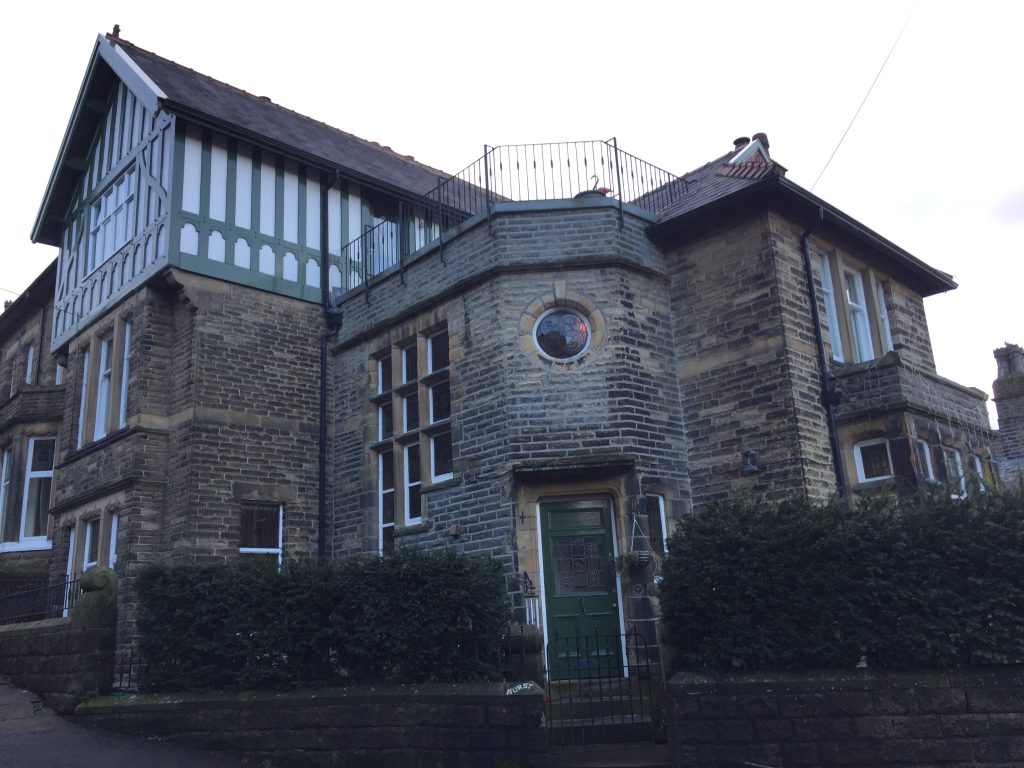
Hurst Dene, Birchcliffe Road 
Ada’s widowed mother, 71, moved in with them, and Edith Miles, Ada’s business partner also continued to live with them. Today it’s an impressive 5 bedroomed stone house and is testimony to Edgar’s successful business as a shuttle tip maker. The tips of the wooden shuttles were made from forged steel and were then fitted on the wooden shuttles to prevent the wearing down of the wood and causing them to snag on the yarn. The steel tips then had to be smoothed on a rotating grindstone to iron out any tiny imperfections that would prevent the shuttle from flying through the yarns from one side of the loom to the other. I own a shuttle that I bought at an antiques centre many years ago and it wasn’t until I learned about Edgar’s occupation that I actually picked up my shuttle and noticed the two metal shuttle tips, almost bullet like at their point. Ada’s grandfather, James Townsend had been a wood turner and shuttle maker in the 1840s and 50s, so I wonder if it was through the shuttle making business that she met her husband-to-be Edgar Harwood. James had lived at Pot House, just a couple of steps across the River Calder from Heppens House but it’s no longer there. James Townsend had also lived at White Houses in 1851. This is an oddly named terrace of blackened stone cottages whose front is directly on the main Burnley Road.
(Update: March 2022. I’d not been able to find any record of Pot House, not identify its exact location but in March 2022 I asked for help from the Hebden Bridge Historical Society who supplied me with a plan that was dated 1939 but clearly showing Pot House.
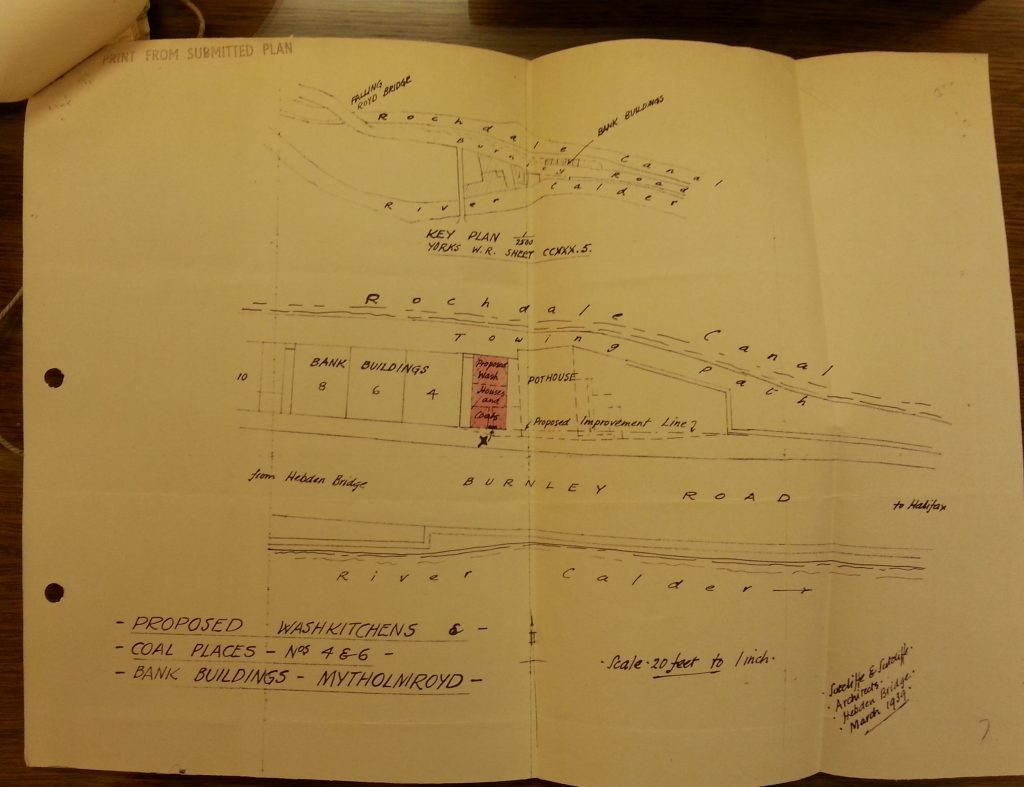
A couple of days later I walked along the canal and so arrived at the terrace marked as Bank Buildings. as luck would have it one of the houses had just been recently purchased and the owned was busy emptying it, and someone was working inside.
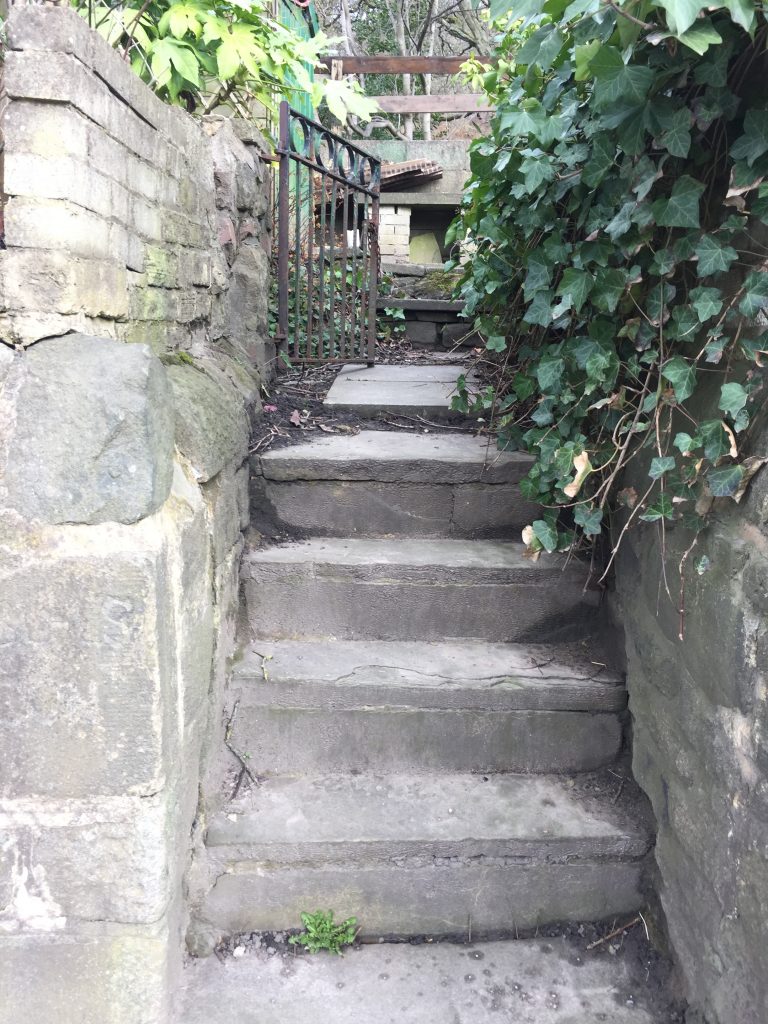
I explained my mission and he encouraged me to go and explore. I opened a gate to the left of the terrace and found myself going up worn stone steps into an overgrown garden. I realised I was actually inside what had been Pot House – in James’s living room. what a feeling! I could see Heppens House across the river)
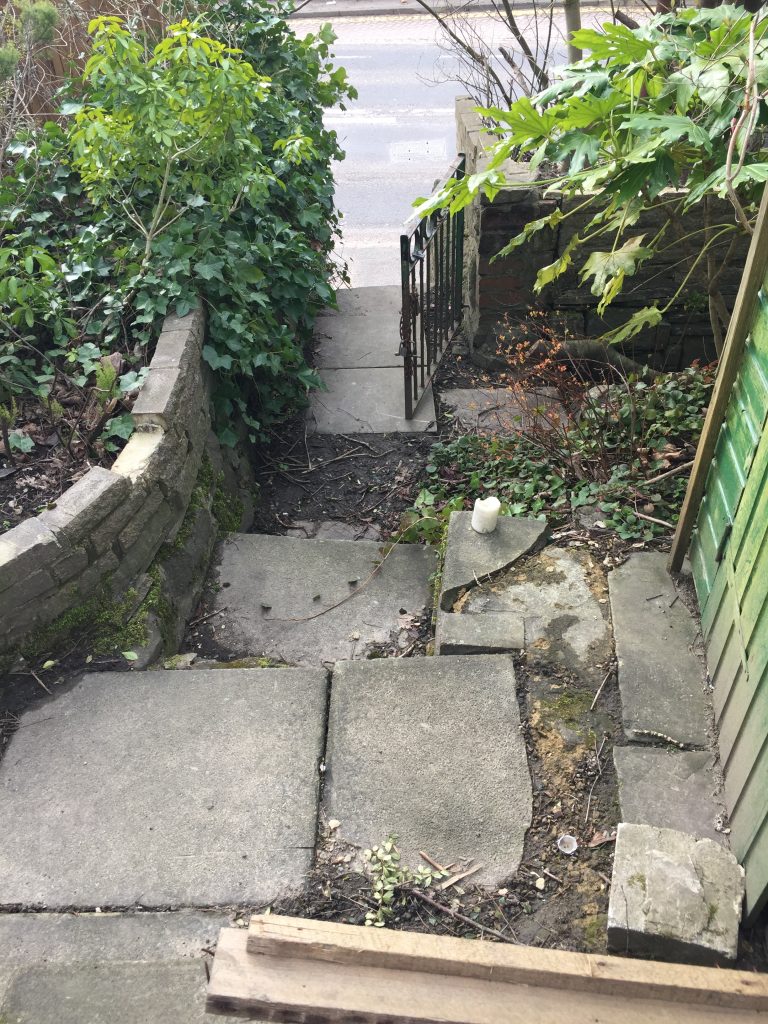
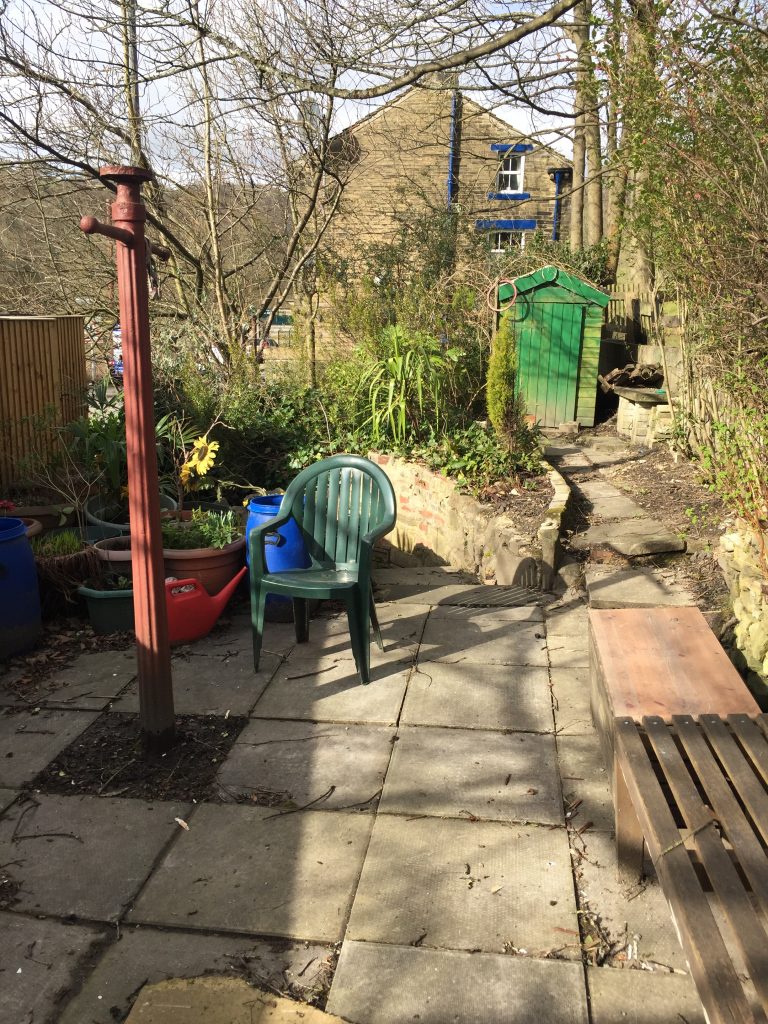
Leave a Reply